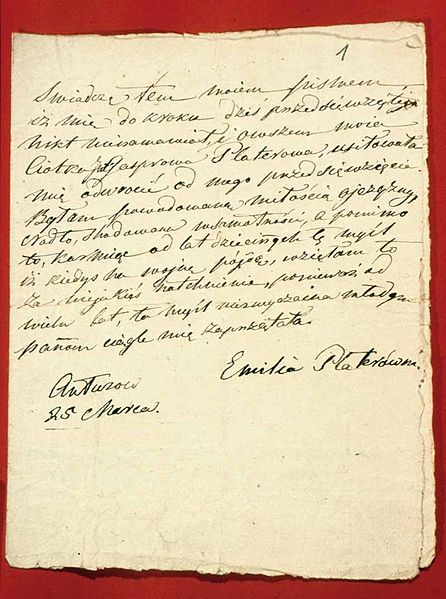
ADVERTISEMENT - CONTINUE READING BELOW
For Emilia Plater, the November Uprising was a chance to fight for her country. In her March 25, 1831, statement, she declared that she had hoped for the chance to fight for Poland for her entire life and that she willing did so of her own accord. As a noblewoman, few men could force her to stand down; as a revolutionary, she was in demand to recruit others. Emilia cut off her hair, as the story goes, and created a uniform for herself, then she raised a small unit of fighters. She led them through several fighting engagements as part of the November Uprising. Due to her ability to lead and recruit, she was awarded the rank of Captain.
As the November Uprising continued, Emilia became critical of decisions made by the insurgent leadership. The plan was to invade Prussia, sit, and wait for an opportune time to take Poland back. In defiance of orders, Emilia, and two others, left the insurgent Polish Army and attempted to take Warsaw and continue the fight. Unfortunately for Emilia, she took ill and died on December 23, 1831. Perhaps she viewed the Uprising as a success upon her death. The November Uprising was a failure and Emilia Plater’s estate was confiscated by Imperial Russia.
Emilia Plater is viewed as a Polish hero. It remains unclear if Emilia actually fought or received the rank of Capitan. What is clear is how she was used as a symbol of national pride. During a time when Poland was not recognized and its citizens were forced to adhere to cultural traditions of Russians, Austrians, or Prussians, Emilia Plater’s story came to symbolize the fight for nationalism. If a noblewoman could fight for Poland, then so could everyone else.

ADVERTISEMENT - CONTINUE READING BELOW
The story of Emilia Plater continues to inspire, even if it is not 100% true. Called the Polish Joan of Arc, despite not being burned at the stake, Emilia’s tale was a spot of hope during the turmoil of the 19th and 20th centuries. She has come to symbolize the sacrifices Poles were willing to make in the name of Poland, its history, and culture. During the Second World War, a Polish support unit was given the name Emilia Plater 1st Independent Women’s Battalion. Numerous streets in Poland are named for her. In 1959, a Polish merchant bulk carrier was named in her honor, the MS Emilia Plater.
At the site of her burial in Kapciamiestis, Lithuania, there is a monument honoring her sacrifice. The monument acts as a rallying cry for Poles to fight for the nation that they love and its history they value. Emilia Plater has become the subject of many literary works, paintings, and sculptures. She had just turned 25 years old when she died. Yet, in her death, she has come to represent the essence of prideful Poles who value their nation above all else.

